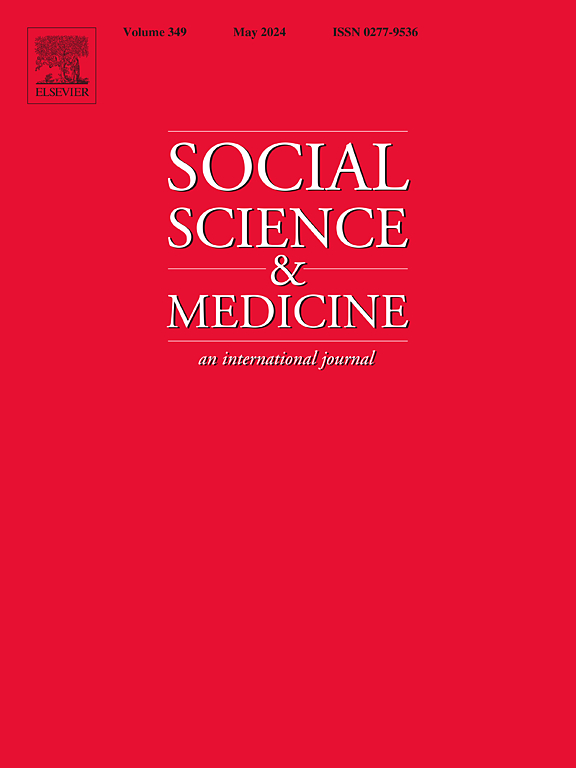Beyond LGBTQ+: Centering QT2S lived experiences in body image research
IF 5
2区 医学
Q1 PUBLIC, ENVIRONMENTAL & OCCUPATIONAL HEALTH
引用次数: 0
Abstract
Background
This critical narrative review examines body image within Queer, Trans, Two-Spirit (QT2S) communities, centering how race, gender, community norms, and dominant beauty ideals shape embodied experience. While body image research has grown in recent decades, it continues to privilege white, cisheteronormative perspectives, leaving critical gaps in understanding QT2S lived realities.
Methods
A structured search was conducted across PubMed, PsycINFO, CINAHL, and targeted journals to identify peer-reviewed, full-text English-language articles published between 2019 and 2024. Studies were eligible if participants identified as QT2S and body image constructs (e.g., dissatisfaction, appreciation, embodiment) were examined. Twenty-five studies met inclusion criteria. Data were analyzed through thematic synthesis, informed by Intersectionality, Queer of Color Critique, and Gender Performativity.
Results
Across diverse study designs, three overarching themes emerged: (1) Exclusion and belonging across social contexts, (2) Socialization of body ideals, and (3) Media surveillance, and the internalized gaze. Findings highlighted how structural discrimination, intra-community dynamics, and media surveillance reinforce Eurocentric and cisnormative ideals, while also shaping strategies of resistance and resilience.
Conclusions
QT2S body image concerns cannot be reduced to individual pathology but must be understood as outcomes of structural and cultural systems of regulation. This review identifies persistent underrepresentation of QT2S communities, the erasure of two-spirit identities, and the need for culturally responsive, intersectional frameworks to guide future research, clinical practice, and public health interventions.
超越LGBTQ+:以QT2S生活经验为中心的身体形象研究
这篇批判性的叙述性综述考察了酷儿、跨性别、双灵(QT2S)群体中的身体形象,重点关注种族、性别、社区规范和主导美的理想如何塑造了身体体验。虽然身体形象研究在近几十年来有所发展,但它仍然优先考虑白人,非异性恋的规范观点,在理解QT2S的生活现实方面留下了重大空白。方法在PubMed、PsycINFO、CINAHL和目标期刊中进行结构化检索,以确定2019年至2024年间发表的同行评议的全文英文文章。如果参与者被确定为QT2S,并检查了身体形象结构(如不满意、欣赏、体现),则研究符合条件。25项研究符合纳入标准。数据通过主题综合分析,由交叉性、酷儿色彩批判和性别表演提供信息。结果在不同的研究设计中,出现了三个主要主题:(1)社会背景下的排斥和归属感,(2)身体理想的社会化,以及(3)媒体监视和内化凝视。研究结果强调了结构性歧视、社区内部动态和媒体监督如何强化以欧洲为中心的顺规范理想,同时也塑造了抵抗和复原力的战略。结论sqt2s身体形象问题不能归结为个体病理,而必须理解为结构和文化系统调节的结果。本综述确定了QT2S社区持续代表性不足,两种精神身份的消除,以及需要文化响应,交叉框架来指导未来的研究,临床实践和公共卫生干预。
本文章由计算机程序翻译,如有差异,请以英文原文为准。
求助全文
约1分钟内获得全文
求助全文
来源期刊

Social Science & Medicine
PUBLIC, ENVIRONMENTAL & OCCUPATIONAL HEALTH-
CiteScore
9.10
自引率
5.60%
发文量
762
审稿时长
38 days
期刊介绍:
Social Science & Medicine provides an international and interdisciplinary forum for the dissemination of social science research on health. We publish original research articles (both empirical and theoretical), reviews, position papers and commentaries on health issues, to inform current research, policy and practice in all areas of common interest to social scientists, health practitioners, and policy makers. The journal publishes material relevant to any aspect of health from a wide range of social science disciplines (anthropology, economics, epidemiology, geography, policy, psychology, and sociology), and material relevant to the social sciences from any of the professions concerned with physical and mental health, health care, clinical practice, and health policy and organization. We encourage material which is of general interest to an international readership.
 求助内容:
求助内容: 应助结果提醒方式:
应助结果提醒方式:


